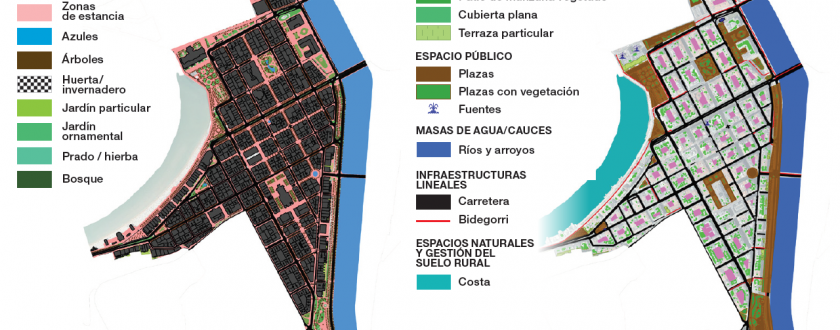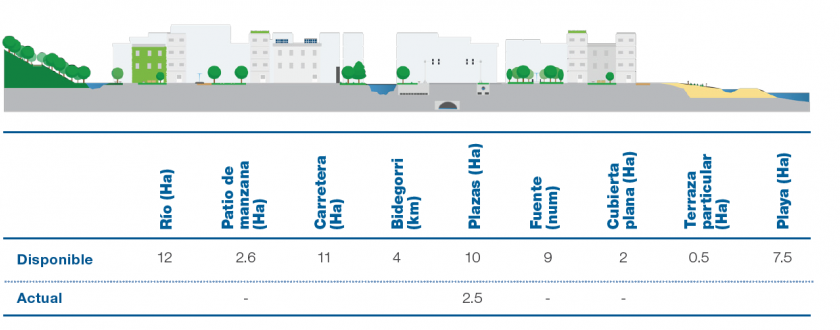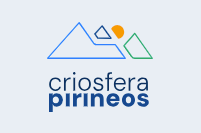NBS URBAN Map Project on the potential of Natural Solutions for Local Climate Change Adaptation: Methodological identification and mapping guide. Donostia-San Sebastian case study
Description of the case study
The NBS URBAN project is meant to integrate nature into urban planning, encouraging the use of nature and ecosystems together with existing infrastructure to adapt to climate change. This initiative is being carried out at a local level in the Basque Autonomous Community, using a map for identification and roll-out.
The map of potential natural solutions provides local administrations with a clear, coherent, and easily replicable methodological sequence that helps them identify and map existing natural solutions as well as potential for their development. This has been implemented as a pilot in the municipality of San Sebastian, in the context of its Local Adaptation Plan.
The Basque Autonomous Community is responsible for planning and management in numerous climate-sensitive areas. More than 75% of the population lives in urban environments, areas that are particularly affected by climate change, as they experience impacts to multiple areas, services, and sectors. Local administration planning and management can provide solutions that minimise their vulnerability.
Among these climate change adaptation strategies we can see clear support for measures based on nature’s integration into anthropic environments. Green spaces and the re-greening trend are considered to be change drivers, particularly in urban areas. In terms of climate change adaptation, natural solutions appear to be an opportunity.
» Integrating nature into urban planning, favouring the use of ecosystems and nature together with existing infrastructure to adapt to climate change in the Basque Autonomous Community at local level.
» Providing local administrations with a clear, coherent, and easily replicable methodological sequence that helps them identify and map existing natural solutions, as well as the potential for their development, taking advantage of resources already available at all times and heading down the path towards adaptation.
The Map of natural Solutions for Local Climate Change Adaptation provides a clear, coherent, and easily replicable methodological sequence that has been implemented as a pilot in the municipality of San Sebastian, in the context of its Local Adaptation Plan. This innovative methodology allows:
• Identifying a municipality’s adaptation assets and natural capital, meaning the natural measures already adapted locally that already contribute to adaptation now.
• Identifying the available urban elements and spaces that can hold natural solutions.
• Establishing priorities and coordinating efforts to implement adaptation actions and measures in the most vulnerable spaces and those with greatest availability for roll-out.
• Identifying new areas of urban production and/or development that can hold natural solutions.
• Creating synergies between mitigation and adaptation actions and measures.
Case study developed and implemented as a climate change adaptation measure.
Ihobe, Donostia/San Sebastian City Council, TECNALIA Research and Innovation
Additional Information
TECNALIA Research & Innovation has developed the NBS methodology thanks to the KLIMATEK 2016 programme’s open call, promoted by the Basque Government. In order to lend this project a practical, demonstrative nature, the NBS methodology was developed by applying it to Donostia/San Sebastian. The results will serve as a baseline for the production of its Climate Change Adaptation Plan.
The main beneficiary agents are:
• Municipal Councils and all organisations that depend on them
• Private initiatives
• The public
The project’s piloting was accompanied by a participation process with the aim of contributing to public climate change knowledge and awareness.
Limiting factors:
• Authority or institutional barriers. The local institution's lack of authority to act: another organisation or private entity has authority over the land where a natural solution could be implemented.
• Social barriers. Land use changes can create social controversy. To avoid this, accompanying interventions with good education and awareness-raising programmes is necessary.
Total project sum: 50,000 euros.
Source of financing: KLIMATEK programme of the Basque Government - Ihobe.
Natural solutions are characterised by their multi-functionality, meaning their ability to provide multiple benefits that can go far beyond the climate change adaptation target and scope for which they were originally designed. In addition, they offer various collateral benefits in terms of environmental quality (in water, noise, air, and soil vectors), human health and well-being, urban regeneration capacity, habitability conditions improvements, soil value increases, job creation, etc.
The Solutions Map was implemented as a pilot in the municipality of San Sebastian in the context of its Local Adaptation Plan, and the results have various readings and interpretations, which have been useful for:
• Informing decision making, providing an assessment of green capital as an input for General Plan for Urban Zoning advancement documents.
• Informing urban development instruments, providing construction and urban planning design criteria in areas of risk.
• Detecting the municipality's most anthropic areas.
• Defining Action Plans meant to promote specific actions and formulate a strategy according to the municipality’s needs.
• Defining a system to monitor and evaluate the efficiency of the natural solutions when it comes to climate change adaptation.
2016 - 2017 (1 year - completed)
Reference information
PYRENEAN CLIMATE CHANGE OBSERVATORY
Avenida Nuestra Señora de la Victoria, 8
22.700 - Jaca
Huesca - España
+34 974 36 31 00
info_opcc@ctp.org







